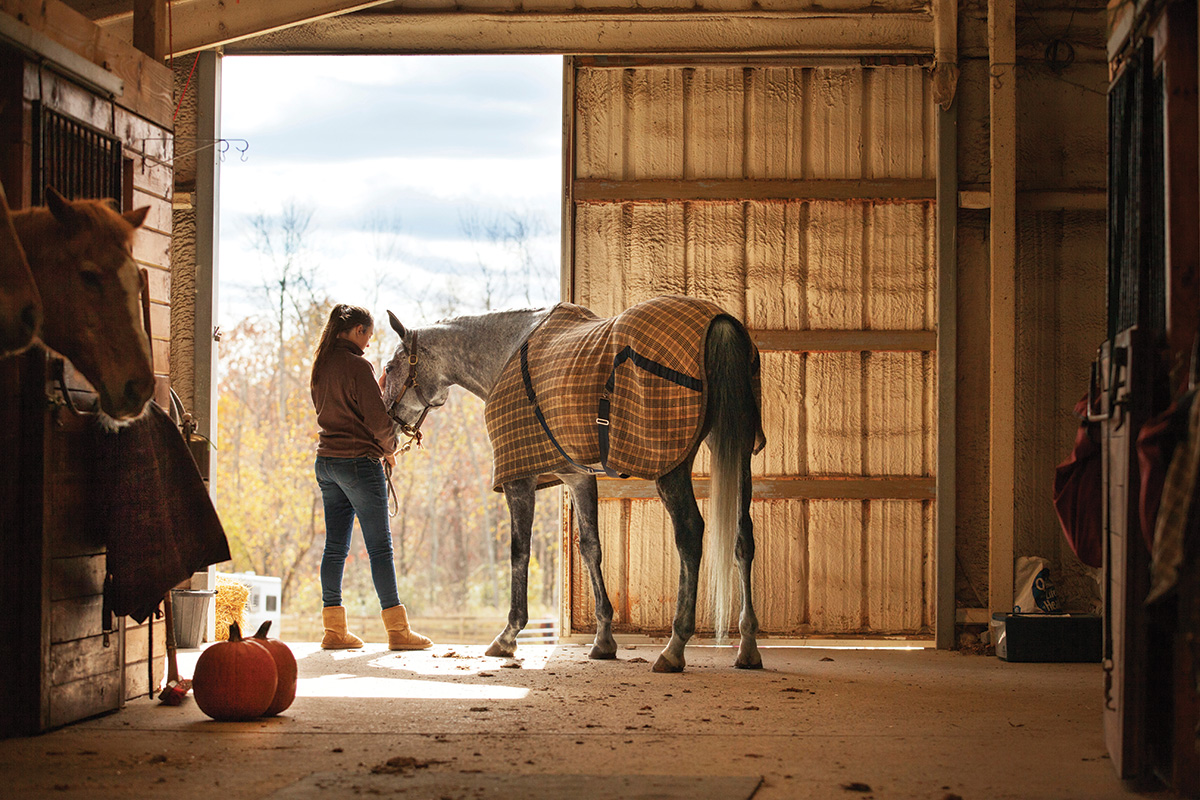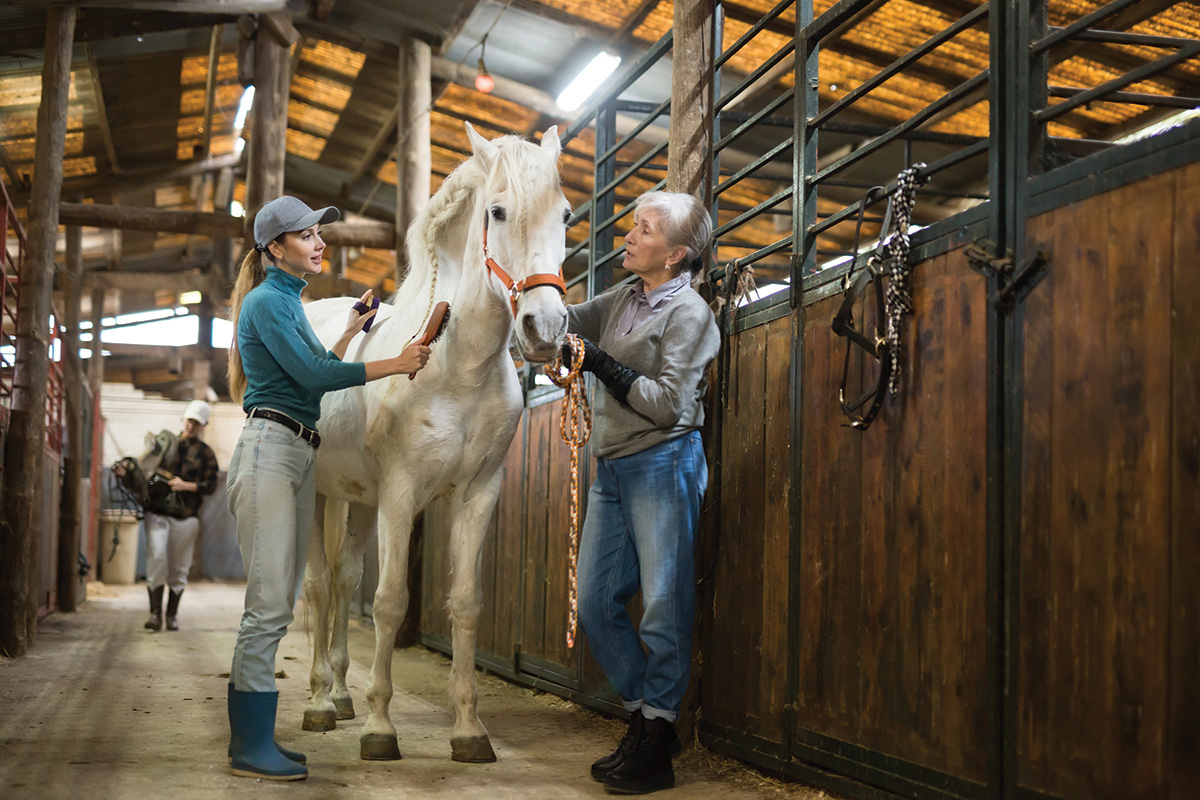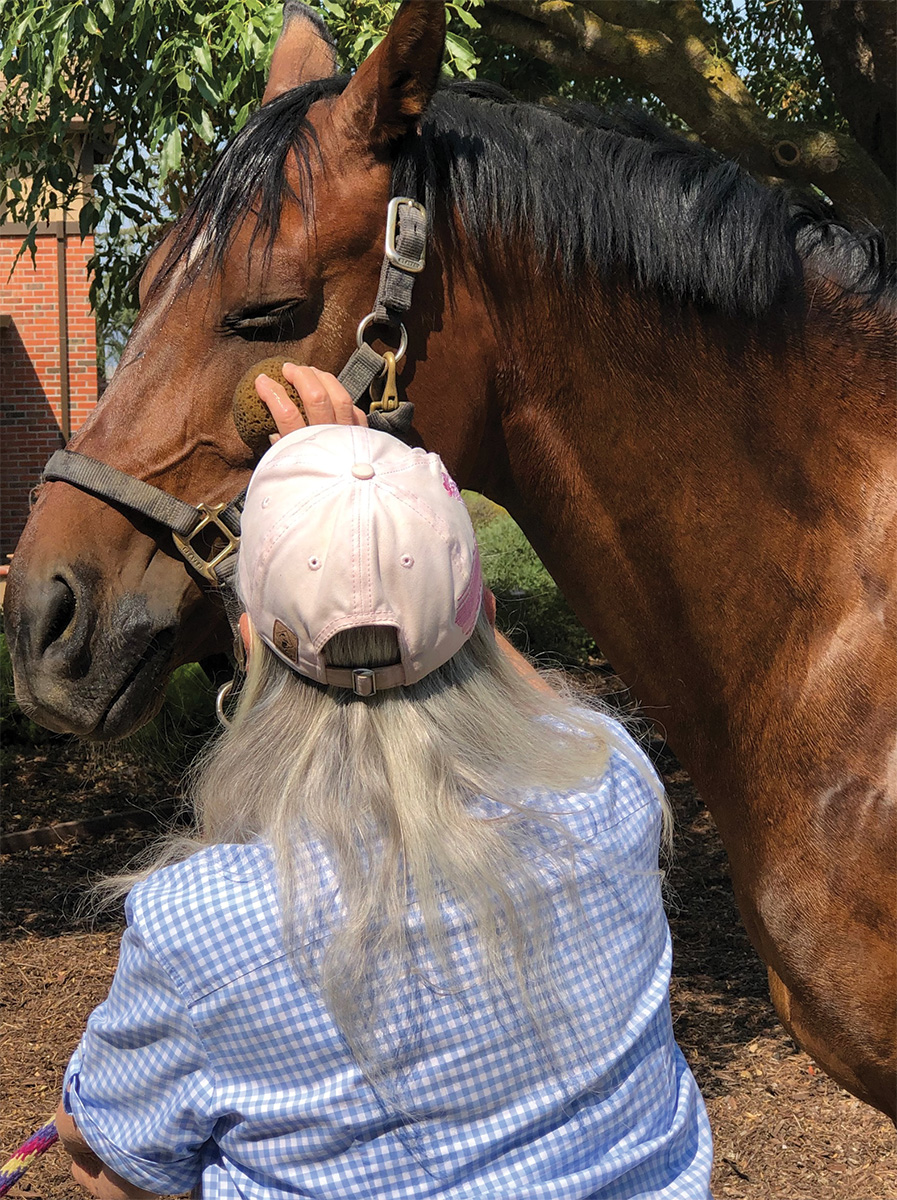Economically speaking, 2023 was a less than banner year for most Americans, and charitable organizations that rely on public donations to keep their operations alive and healthy were not immune to these financial realities. Hardest hit were nonprofits like equine welfare organizations, which were challenged to think outside the box in order to hold onto existing donors, attract new ones, and compensate for those who fell by the wayside.

How Equine Nonprofits Have Gotten Creative
In December 2023, the Heart of Phoenix Equine Rescue of West Virginia came up with a creative plan to appeal to existing donors and attract new ones without breaking the contributor bank.
The campaign asked donors to send the organization a Christmas card containing between $1 and $5. In response, photos of all the cards and the collective amount of the donations they contained were to be posted on the organization’s website.

As of press time, the rescue had received dozens of cards in the days leading up to Christmas, with more pouring in.
“They have been coming in every day, and they all contained between $1 and $5,” says Suzanna Johnson, Heart of Phoenix education officer. “This was a way to appeal to people who don’t have a lot of money, but everybody likes to send Christmas cards.”
Covid and Inflation
According to the website of the RKD Group, Dallas-based consultants who use data-driven strategies to help animal welfare nonprofits find connections with donors, 2023 donation revenue is down over the past 12 to 18 months largely because givers have been hard hit by inflation.
Meanwhile, the organization predicts that continued inflation and rising interest rates will stifle efforts to attract new donors this spring.
That’s not news to Grace Purdom, president of the California-based Hope 4 Horses.
“We have been in the horse business a long time, both the nonprofit and for-profit parts,” says Purdom, whose husband Scott is a trainer and clinician. “We’ve traveled all over the country and seen horse rescue after horse rescue close—not just in the east, but in the west, too.”

According to Purdom, some of those organizations folded after Covid-connected business grants dried up.
“Some never came back,” she says.
More recently, as financial support has deteriorated, the cost of keeping horses has escalated.
“The same night we had a board meeting and were told that private funding was down between $30,000 and $40,000, we had just gotten a $25,000 hay bill,” Purdom recalls.
She adds that farrier and veterinarian fees have gone up this year as well.
The rise in operational costs all threaten horses’ chances of getting the rehabilitation and aftercare they need.
“We see horses in need from owner surrenders, and there still is indiscriminate breeding out there,” Purdom says. “There were 140 horses from one animal control [agency] out there—where do you put 140 horses?”
Failure Is Not An Option
As a result, rescues have been forced to re-evaluate their own criteria for helping horses in need.
“It has made us focus more on ‘desperate need’ cases, where in years before we could help before things [got] bad,” explains Heart of Phoenix Founder and Executive director Tinia Creamer. “As it is now, if a horse isn’t in dire shape, donors do not step forward, so we have had to get more creative.”

Altogether, the circumstances have created a perfect storm for equine welfare organizations who have adopted whatever tactic they could to meet the challenges.
Most are taking to social media to share the journeys of individual horses as they transition from rescue through rehabilitation to readiness for adoption. They are also engaging the local and online communities to assume a stake in the organization’s success, and they’re cultivating a pool of volunteers to do everything from handling horses to office work.

Whether the current economic circumstances challenging equine welfare nonprofits will subside any time soon is anybody’s guess. But even if the economic picture changes, Creamer says equine welfare organizations will always be challenged to make the most of existing or potential resources at their disposal because failure is not an option.
“I don’t see the economy improving in the short term, and a rescue has to adapt to the world we have,” says Creamer. “Having said that, we’ve made changes and continue to make them to try to be here next year and the year after. Horses depend on us here, and we owe it to them to be here.”
Successes in the Face of Challenges
We reached out to the ASPCA Right Horse program to ask how their equine adoption partner network has fared despite recent economic conditions, and asked for some suggested action items you can do to help.
◆ Multiple factors are converging simultaneously, impacting shelter and rescues’ ability to provide care. Despite challenges, partner organizations of the ASPCA Right Horse program saw more than a 5 percent increase in adoptions in 2023 compared to 2022.
◆ Data from ASPCA’s adoption site shows there is a demand for adoptable horses, including older horses, as evidenced by more than 2 million page views for adoptable horses in 2023 and over 4,000 adoption inquiries.
◆ Additionally, the ASPCA, alongside a rising number of other animal welfare organizations, are focused on services, including subsidized veterinary care and resources, to help keep equines safely in their homes and out of shelters and rescues.
◆ The ASPCA encourages anyone interested to support their local animal welfare organizations by adopting, volunteering their time, donating supplies, or becoming foster caregivers. To find an organization in your area to support, visit myrighthorse.org.
Equine Nonprofits That Help People
For equine assisted services (EAS) nonprofits, humans depend on the horses, too.
The Connected Horse launched in 2015 as pilot projects at Stanford University and the University of California at Davis. It pairs senior horses, some rescued or surrendered, with people living with Alzheimer’s disease and other dementias and their caregivers to help them manage stress and navigate the flood of physical and emotional ramifications connected with the conditions.

Through the program, human participants connect with the horses as they brush, walk, and visit with them under the watchful eyes of program personnel.
“The horse is really the teacher,” says Paula Hertel, Connected Horse co-founder.
More than 60 pairs of patients and caregivers connected with equines during the first three years of the university pilot programs. Another 186 people took part in Connect Horse programs at private partner barns, including those that rescue, receive surrenders and place adoptable horses.
According to co-founder Nancy Schier Anzelmo, Connected Horse programs are supported by grants, donations from program participants and their families, and private supporters. And while she admits that the recent economy has affected the fundraising outlook for almost all nonprofits, the mission of equine-focused organizations is critical for the horses and for the humans involved.
“Horses, especially older horses, need purpose just as people do,” she says. “Our country needs to support programs to serve [people] in need right now as well as older horses, or horses who cannot be used for sport anymore. It’s very personal, and making connections in nature and with others is a key to building a community that serves each other.”
Make the Most of Your Donation to Equine Nonprofits
This year a simple trip to the supermarket was an economic shock for many across the country. At the same time, the nonprofit organizations that help horses are experiencing the same trauma every time they order hay, purchase grain, or call for the services of farriers and veterinarians.
But many of those who are challenged by the economy themselves still want to support horses in need however they can.
Grace Purdom, executive director of Hope 4 Horses, shares her best advice for doing that.
“First, we always recommend that people donate locally,” she says. “Visit a local rescue organization and learn about what that organization does and how it does it.”
For that, Purdom recommends that prospective donors sit in on an orientation session that many organizations host for new volunteers, new donors, and members of the public.
“Operators use orientation sessions to talk about the organization’s mission, its facility, how many horses they have, who they have on staff, and how many volunteers it has,” she says.
Then take a tour of the facility. Horses onsite at effective rescues should appear to be in various stages of rehabilitation and look happy and healthy under the staff’s care.
During the tour, ask the staff guide lots of questions, especially if a horse appears to be thin.
“The staff could say that the horse just arrived 30 days ago and is in rehab,” says Purdom. “The point is to ask open questions and expect honest answers; a legitimate rescue is an open book.”
Finally, do a bit more research before making that donation. First, make sure that the organization is a legitimate 501(c)(3) under federal tax rules. That designation recognizes the organization as a nonprofit, which means it is exempt from federal income tax. As a result, contributions to 501(c)(3) organizations are tax-deductible for donors.
Finally, just before writing that donation check, visit charity evaluation websites, such as GuideStar, which allows nonprofits to share information such as address, mission, key leadership, employee identification numbers, tax status and Return of Organization Exempt From Income Tax (IRS form 990) forms for three fiscal years.
“No matter how large or small they are, donations are very important to all of us,” says Purdom.
Further Reading: Dealing with Inflation as an Equestrian





